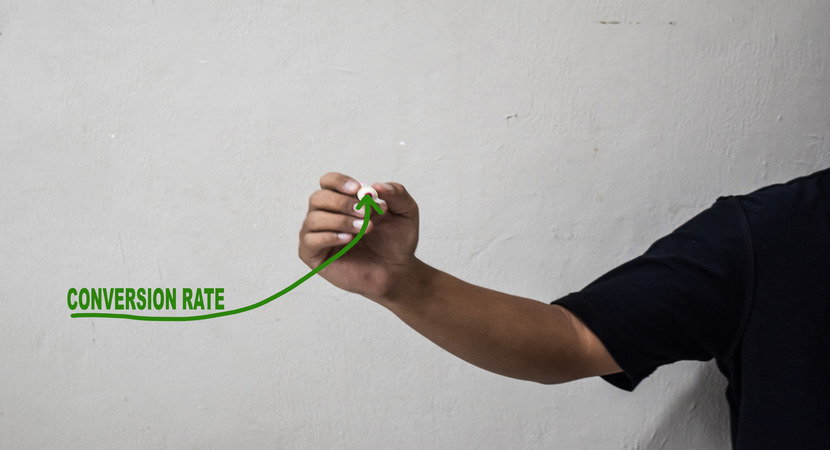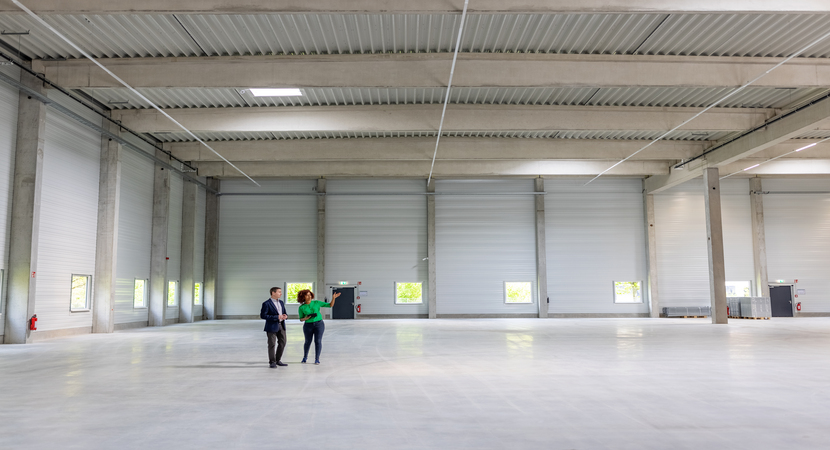Ensuring a pleasant resident experience for your renters is key to retaining current customers and attracting new ones. As the Internet is a powerful, word-of-mouth marketing platform, taking care of your renters will help you build a strong reputation through reviews and positive buzz. While we all may intuitively understand that keeping residents happy is important, it can be hard to know which steps to take to make this a reality.
Here, we’ll cover our top tips for providing a great resident experience, from marketing tactics to the leasing process and beyond.
Resident Experience Starts with Marketing
The resident experience begins even before a lease is signed—it starts when your potential renters are looking for a new place to live. These days, the most common way for people to find their new place of residence is through Internet Listing Services (ILS). In 2022, the top three most-visited ILS sites saw a combined average of over 40 million visits to their sites per month. That’s a lot of potential viewers of your property. So, creating a strong first impression is key to helping you stand out from the rest.
Making a Good First Impression
When prospective residents look for a place to live on ILS sites, you have a unique opportunity to reach a large number of people. Now that you have this opportunity, it’s important to know how to take advantage of it. First, employ Search Engine Optimization (SEO) tactics to make your property searchable and to ensure it shows up prominently in search results. These tactics include having the correct address, name, and contact information on each ILS site; using pictures and video to show a visual representation of your property; and including strong, accurate descriptions of your property.
Photography
Beyond making sure the information is correct, your main concern on ILS sites is providing high-quality pictures and videos that allow potential renters to truly envision life at your property. Here are a few quick tips for taking the perfect photo:
- Lighting | Make sure the rooms you photograph are well-lit with as much natural light as possible. Feel free to supplement with interior lights like chandeliers. This will help give your property a fresh, clean feel.
- Composition | Consider everything that can be seen in the photo. Ensure items in the frame are arranged in an aesthetically pleasing manner. Further, include as much of each room as possible in every photo. Otherwise, the room appears smaller than it really is, which can do a disservice to your listing.
- Editing | Let’s be clear: heavily editing your photos to the point that they no longer realistically represent your property is a big no-no. However, some slight edits to balance brightness, exposure, and cropping are encouraged.
Additionally, consider staging the rooms you’re photographing. Rooms tend to look smaller when they’re empty, but adding furniture can help give a truer sense of scale. Plus, this can help prospective renters visualize what can fit in their new home.
Video
While not a necessity, video can be a highly valuable tool in differentiating your listings from those of your competitors. With video, you have an opportunity to show viewers the entire layout of the space. Further, you can create a video experience that allows renters to see what a day in the life at your property looks like. Just like with photography, when taking videos, consider the lighting, composition, and editing to get the highest quality video possible.
A Positive Leasing Experience for Residents
Once a potential renter shows interest in your property, ensuring they experience a quick, effortless, and positive leasing process is the next step in making them long-term customers. There are four distinct parts of the leasing process, each with its own unique needs:
- Personal visit
- Application
- Lease signing
- Move-in
Here, we’ll talk through several steps you can take to make this process as easy as possible for your prospects.
Personal Visit
During the personal visit, potential renters have already decided they’re interested in your property. Now’s your chance to seal the deal. Be sure to have a vacant unit available to show. Preferably, this would be a unit that aligns with the renter’s desired features (3 bed, 2 bath; 1 bed, 1 bath; etc.) so they can get a true feel for their new spot. Of course, this unit should also be in top condition. It should be clean, well-lit, and have no outstanding maintenance issues.
Next, it’s beneficial to have a knowledgeable member of your staff conduct the showing. That way, they can answer any questions the prospects might have. This person will be the face of your business, so it’s important that their demeanor is pleasant and approachable. This will give prospects a taste of how your company will manage the property once they become residents. Lastly, if you want to go the extra mile, consider offering complimentary food and/or drink during the tour.
Application
Once your prospects have decided they want to live in your community, they’ll have to submit an application. This can be a tense time for them, as their future is about to be determined by whether their application is approved. To help cut down on the waiting period, consider outsourcing your background checks. This will help you move prospects through the leasing funnel more efficiently. Further, you can streamline the application process by using online applications through Rent Manager’s Apply Now feature. With Apply Now, prospects can quickly apply online without any back-and-forth needed on your end.
Lease Signing
At this point in the process, your prospects are eager to move in. So, it’s important that the lease signing process is as frictionless as possible. Typically, this process includes preparing a lease, sending an unsigned copy to the approved renter, receiving the signed copy, and then having the property manager sign it. While in the past it was standard to have approved renters endorse the lease in person, people now expect to have the option to sign their lease electronically. To help with this, Rent Manager’s Signable Documents feature—available through Tenant Web Access (TWA)—allows you to send, receive, and sign documents from your phone or computer.
Even if you choose to execute this process digitally, it’s important your renters understand everything outlined in their lease. So, make sure someone from your team is available to answer any questions they may have.
Move In
The actual process of moving in will likely be handled entirely by the renters (or whoever they choose to hire to move their items). However, you still have a responsibility here—making sure the unit they move into is in perfect condition.
First, the unit should not have any outstanding maintenance issues. That means addressing any structural damage, health hazards like mold, and more. Second, the unit should be professionally and thoroughly cleaned before move-in. Lastly, make sure that any utilities are in working condition. This means evaluating the HVAC system, ensuring all lights and outlets are working properly, and checking that the plumbing is in working condition. To help streamline this process, Rent Manger’s Make Ready Boards allow you to schedule your process with color-coded statuses for service issues and inspections.
Resident Experience for Current Residents
So, you’ve gotten new renters in the door with great ILS marketing; wowed them with a great in-person visit and a quick leasing process; and provided them with a clean unit to move into. Now, it’s time to turn your attention to making their residence with you a positive experience. Ensuring your residents enjoy their time at your property helps you retain them and generates favorable online reviews that attract new residents.
Maintain the Property
People expect to live in a place that is clean, well-maintained, and professional. To ensure this standard is upheld, you should routinely have the grounds manicured. In the colder months, this means salting walkways, stairs, and parking lots that are icy and shoveling any snow that impedes travel. In the warmer months, this means having grass cut, weeds whacked, and landscaping completed.
Further, it’s important to stay on top of any amenities. For example, community laundry rooms should be clean and in working condition, all gym equipment should be functional, recreation room games should be fully intact, the list goes on. These are small things that go a long way in keeping your residents happy.
If you have scheduled maintenance that will impact your residents—such as loud renovations, early-morning lawnmowing, or the like—clearly communicate what work will be done in a timely manner. That way, residents won’t be unexpectedly woken up by a leaf blower on Sunday morning. Plus, with Rent Manager’s mass communication capabilities, you can text or email all your tenants in a matter of seconds.
Promptly Respond to Maintenance Requests
If a resident has an issue in their unit, they will submit a maintenance request or reach out to someone on your team to communicate their needs. Once this request is submitted, it’s important to get someone to take care of it quickly and thoroughly. Service issues are inevitable, so residents will be understanding of certain required maintenance. However, frustration can mount if their problem isn’t resolved promptly. If you don’t already have a network of service professionals to call on, or if you’d simply like to outsource the responsibility of handling service requests, consider a Rent Manager integration like Latchel or Property Meld. Once the proper maintenance person has been notified, you can track the project’s progress with Rent Manager’s Service Issue Statuses feature.
Host Resident Events
Resident events can boost morale and create a sense of camaraderie in your community. Especially when people have recently moved, it can be difficult to create a social network in their new area. Luckily, new renters have a built-in community at the property that can be leveraged through resident events. So, putting on these events can be a quick way to make your new residents see their new place as home.
Deciding what occasions to orchestrate can be difficult, but always remember that you can take a poll to get your tenants’ ideas. This will ensure that you are holding events they’re interested in attending. We’ve got a few resident event ideas of our own to help you get started.
Lease Renewal Process
With everything that goes into finding, screening, and processing a new resident—not to mention the loss of income from a vacant unit—tenant turnover can be costly. However, now that you have a firm understanding of how to provide a positive resident experience, the final piece of the puzzle is nailing the lease renewal process.
One of the top things to consider during the lease renewal process is how much time to give residents to consider their renewal. In general, reaching out to residents two to three months before lease expiration is a good rule of thumb.
For the lease itself, it’s important to consider rent increases carefully. Raising the rent too high may deter renters from renewing their lease, while not raising it enough may not help offset the inflated cost of maintenance, insurance, and more. Typically, a three to five percent increase is acceptable. However, you should always check to make sure that the new rent amount is competitive in your market.
Lastly, just like in signing the original lease, this process should remain as frictionless as possible. Be available to answer any questions your residents might have about their new lease. As an added bonus, provide them with a way to sign their new lease digitally.
Conclusion
The resident experience separates one property from another. Therefore, crafting a positive one is key to attracting and retaining renters. While many may think of the resident experience that occurs once the lease is signed, making renters happy starts long before that. From the moment a potential renter finds your property on an ILS site to the final handing-over of the keys, you now have a full arsenal of ways to make sure your residents have a great time at your property.
 Register for RMUC.25
Register for RMUC.25





